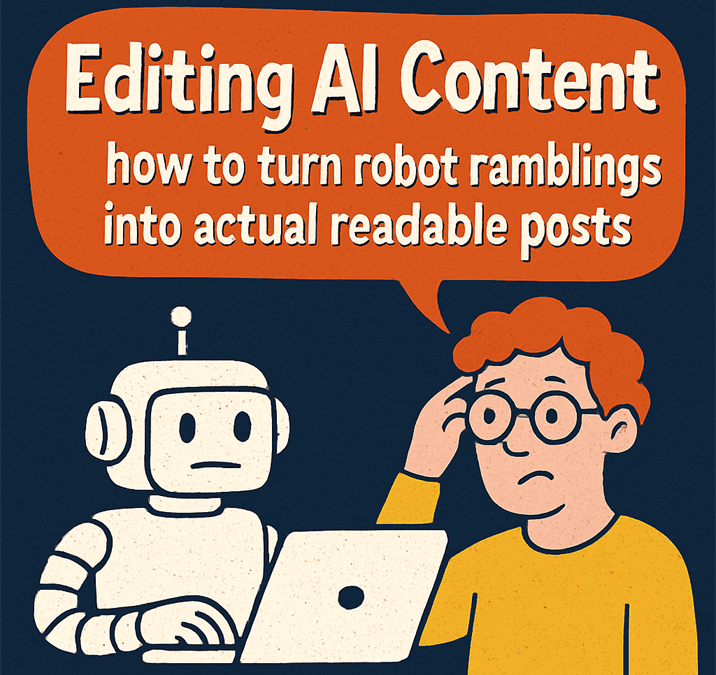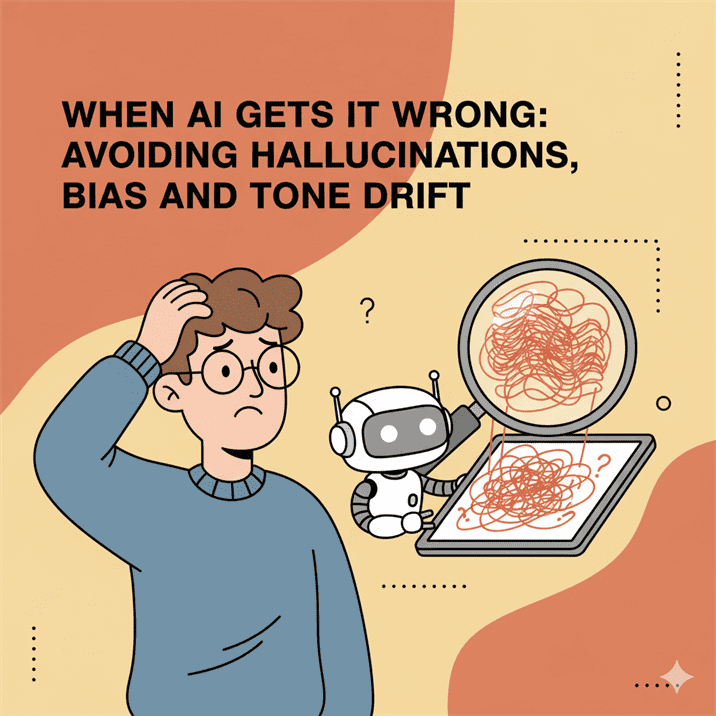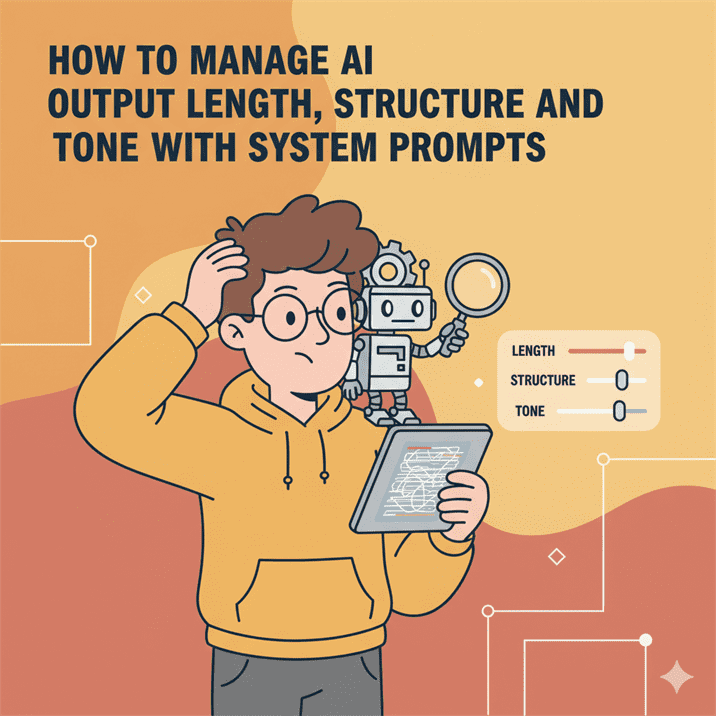Editing AI content: How to turn robot ramblings into readable posts

So you’ve got an AI draft. Congrats! You now have 800 words of suspiciously enthusiastic filler, six reused metaphors, and one deeply weird analogy about “navigating the digital landscape.”
Neat.
Here’s the truth: AI can crank out content like it’s training for the Content Olympics.
But volume ≠ value. What you get is not a finished article. It’s a glorified first draft. A base coat. A content-shaped object.
And editing AI content? That’s not just spellcheck and vibes. It’s a full-blown rescue mission.
Here’s how to transform a bland, generic robo-draft into something that sounds like a human with a clue wrote it:
1. Read it like a real person.
Imagine you’re the reader. Would you care? Is it useful?
Or does it just answer the question “Can AI write content?” with “Yes, and here are 12 ways to make you regret it.”
2. Cut the fluff.
AI is a filler factory. It loves grand intros about “the power of content” and will repeat the same point three different ways, just with more adverbs.
If it adds nothing? Bin it.
3. Fact-check like a grudge-holding librarian.
AI will say anything with confidence. Dates, laws, financial advice? Bold lies, beautifully phrased.
Always double check. Even if it sounds legit.
4. Restructure like you mean it.
AI’s idea of flow is… generous. Paragraphs wander. Subheadings appear out of nowhere.
Get in there and organise it like a pro: hook, meat, close. No more zigzagging.
5. Fix the tone. Add the brand voice.
Right now, it reads like a slightly overeager intern who skimmed your website once. Rework it until it actually sounds like you.
Or at least like someone who understands your reader isn’t a robot.
Spotting AI gibberish: a professional editor’s survival guide
Not all AI content is salvageable. Sometimes it’s technically English, but emotionally? That’s another story.
Here’s how to tell when your draft is secretly nonsense:
- Is it saying anything?
If you finish a paragraph and have no idea what it meant, it’s filler wearing a power suit. - Is it contradicting itself like a caffeinated philosopher?
“You should do this.” Next sentence: “You probably shouldn’t do that.” Pick a lane, robot! - Are the examples vague, missing, or weirdly American?
AI struggles with the specifics. It loves saying “For example…” and then offering no example. Or quoting a study from 2008 like it’s breaking news. - Is the tone all over the place?
If it starts out formal, gets chirpy, then swings back to corporate jargon, congratulations, you’re editing a bot on a personality bender. - Is it stuck in a phrase loop?
Repetition is AI’s comfort zone. If it uses “in today’s world” more than once, it’s time to intervene.
The sneaky mistakes only a human will spot
Even when AI almost nails it, there are editorial landmines hiding in plain sight.
Like:
- Weird emotional tone shifts.
Nobody wants a peppy intro to a piece about grief. Or redundancy. Or financial ruin. AI doesn’t know when to shut up and be sensitive. - Cultural misfires.
“As Americans say…” No. Just no. Know your audience. AI doesn’t. - Assuming knowledge (or insulting yours).
Either it explains compound interest like you’re five or skips crucial steps like you’re Warren Buffet. Neither is helpful. - Brand-breaking phrasing.
“Why not try cutting corners?” Because our brand values integrity Janetbot! - Flattened nuance.
AI loves black and white takes on complex stuff like tax law or healthcare. Which isn’t ideal when you’re aiming for accuracy.
These aren’t grammar issues. They’re judgment issues.
And no offense to our artificial friend, but it doesn’t do judgment.
So why does AI still need a human editor?
AI can fake voice. It can mimic structure. But it can’t think critically or care about your reader. (No heart, no soul. Just vibes and statistics.)
Here’s what editors bring that AI can’t:
- Nuance: Knowing when to be bold, when to hedge, and when to say, “Honestly? This whole section is going in the bin.”
- Tone: Adjusting the mood so it lands with your audience, not just “a general human.”
- Relevance: Turning a draft for everyone into content for someone.
- Credibility: Spotting dodgy sources, bad logic, or confident nonsense and cutting it off at the knees.
Even the best AI tools don’t know what your audience cares about. Or how your brand wants to be seen.
That’s your job. And mine.
Human editing isn’t a luxury. It’s the last line of defence between your brand and a mildly embarrassing LinkedIn post.
Want your AI content to sound like it was written by someone with actual expertise (and a pulse)? That’s what I do.
Let’s make your content sound human again: www.coastalcontent.co.uk



